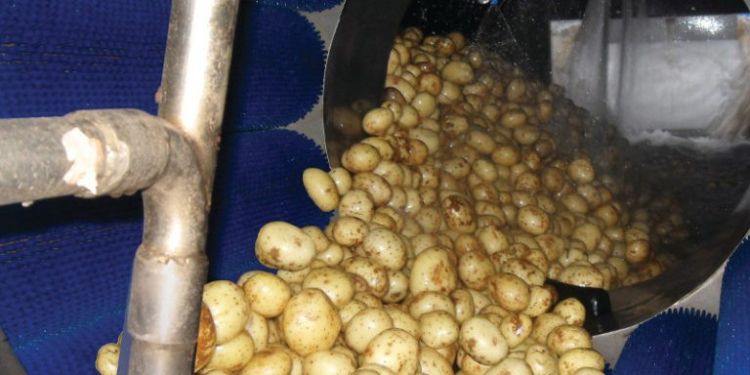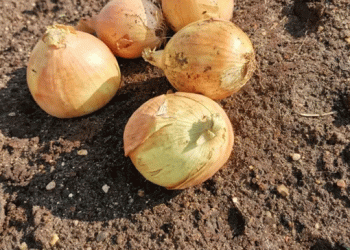Potatoes entering the processing line vary in terms of quality, solid content and contaminants. Processors employ various techniques to remove stones, soil and clods such as a washer, de-stoner or foreign material sorter. In some cases processors also use brine grading (salt bath) to remove low solid potatoes.
The importance of washing the potatoes after this initial process cannot be understated. In fact, it’s critical. If soil, sand or chlorides (salt) enter the steam peeler, this will have a negative effect on the steam peeling process as well as causing excessive wear on the steam peeler vessel and exhaust system, meaning that the steam peeling process cannot be optimized.
Experts from Tomra said:
“One of the most common problems that we see in the steam peeler is clay sticking to the surface of the potato. This is caused when steam cannot penetrate the clay to peel the skin below.”
A good sorting and washing process before steam peeling is essential to resolve the problem of clay remaining on the surface of the potato. TOMRA Sorting Food is able to offer processors a range of sorting and washing solutions to deliver a high quality final product.
Field Potato Sorter
The Field Potato Sorter, FPS, is a sensor based food sorting machine for unwashed potatoes, removing soil clods, stones and foreign material. It is a high volume, high capacity, robust food sorting machine for growers, packers and processors that is built to last.
“The FPS is ideal for difficult lifting and variable crop conditions. Implementing TOMRA’s FPS in a processing line will help to achieve an optimized steam peeling process further down the line”, experts from TOMRA pointed out. After the initial sort, TOMRA’s innovative range of post steam peeling equipment can be introduced to remove peel and to wash potatoes.
TOMRA’s Dry Peel Separator
The primary process after the steam peeler is the TOMRA Dry Peel Separator, DPS, which separates the loose peel and starch from the surface of the potatoes without removing good flesh or losing yield. Today, TOMRA has more than one hundred dry peel separator units in operation in the potato industry.
Skin separation
The screw/auger system has an established mixing design. The screw enables the processor to control the time that the potatoes stay inside the DPS. This is important for applications where the line flow rate varies. The screw/auger flights are fitted with special design polished lifters to ensure movement of the potatoes between the flights.Speed control gives flexibility for drum speeds, which ensure that loose skin is effectively separated from the surface of the potatoes to outside the drum.
Plug and play
Haith Multi-Wash System offers De-stoning-barrel washing and brush polishing all in one unit, the latest and important upgrade is the split barrel which allows the washing section to rotate in the opposite direction to the polishing rollers there is a separate inverter speed control on each section giving more flexibility and control over the amount of washing and polishing required. “Included in the system is a waste removal tank with water recycling, the compact all in one plug and play design makes installation and set up very simple, there are a number of options and configurations available to suit customer’s specific requirements”, said expert crew form Haith.
Supaflume De-stoner
There is a feature on the control to allow simple and fast emptying of the system when changing varieties. “This new vegetable washing concept combines all the proven qualities of the popular Haith Supaflume De-stoner with excellent wash quality of the Haith Semi-Submerged barrel washer whilst incorporating polishing with the tried and tested direct drive Haith Root-veg Polisher”, said experts from the Haith.









